The Wonders of One Offs
Posted on May 31, 2016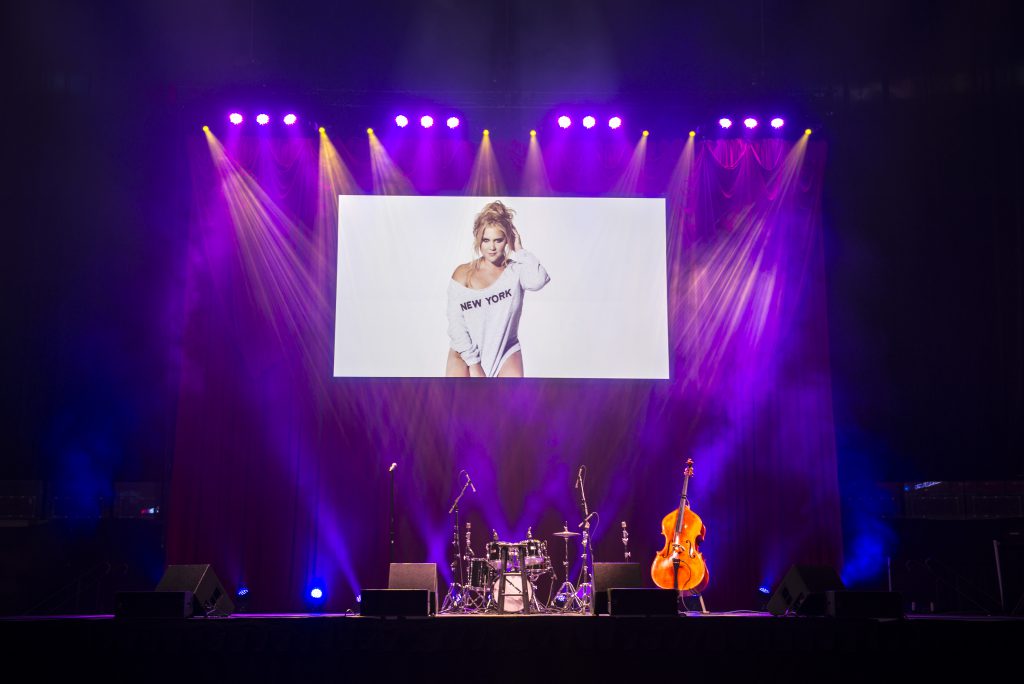
In most cases, when lighting designer Brett Angstadt of Round Peg Productions is called on to do a one off, he doesn’t quite know what to expect. He wouldn’t have it any other way either! For this Maryland-based LD, the improvisational aspect of one offs is not only challenging, it’s also a lot of fun – and it helps sharpen design skills that serve him well on tours and other projects.
It’s not that one offs are all fun and spontaneity, though. There have been times when Angstadt has had to punt his way through much of a concert. Plus, as is often the case with successful impromptu experiences, good one offs do require advanced planning as this LD will readily attest.
Having done one offs for artists ranging from small touring bands to superstars like Amy Schumer and Fetty Wap, Angstadt is well versed on the subject. He shared some tips with us on putting a one off rig together, preparing a punt page and going with the flow on one offs.
Many one offs are at smaller or mid-sized venues, but you’ve done quite a few one offs at big arenas for superstars. Does it change how you approach a one off when it’s at a large venue?
“Not really. It’s all about supporting the performance. I focus on what I can do with lighting to bring the best show for the performer to the audience.”
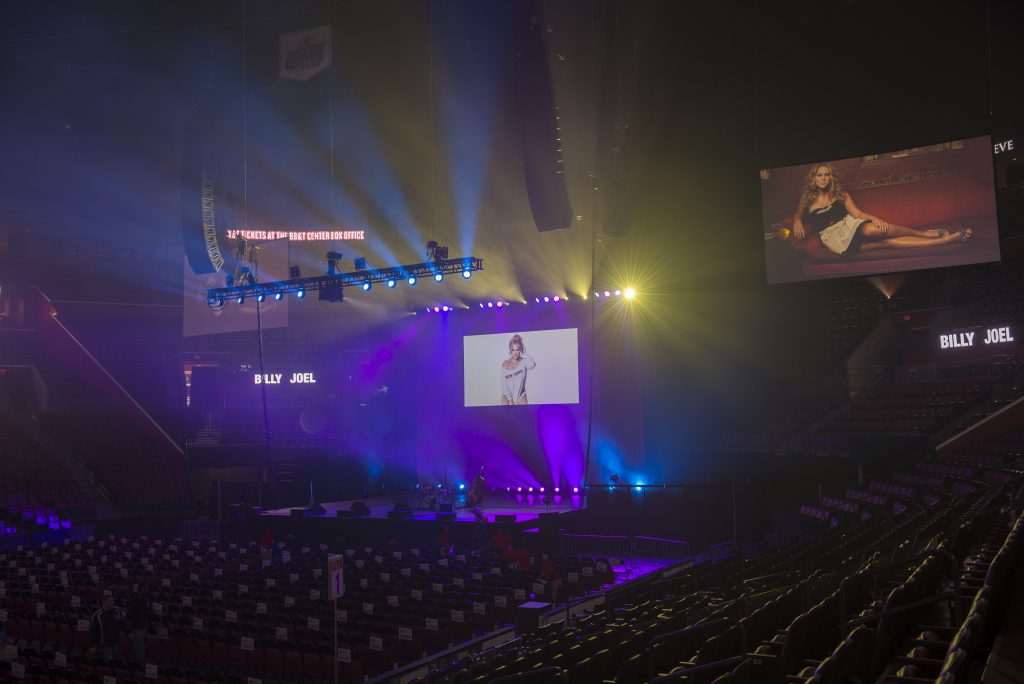
When you are told you’re going to be working a one off, what’s the first thing you do? How do you begin the process of putting together a show?
“First I do my homework by seeking input from the artist’s management, production team, rider etc. I also will spend a good deal of time looking up pictures and videos of past shows and I’ll read about them online. For example, when I worked with Amy Schumer I watched her most recent HBO special and used it as a starting point for my design.”
What did you learn from looking at that HBO special?
“It’s funny you ask because they basically told me, after my first design pitch where I took some stage design notes from the HBO performance, that they wanted something different from the look of that show. The main take away that I carried into the show was that she stayed pretty much on her mark center stage and I could build around that instead of some comedians that roam the stage during their set.”
When you do a one off for someone like Amy Schumer or Fetty Wap, how do you work with their LDs? How involved does their LD get? Are there times when their LD isn’t involved at all?
“In both those situations there was no other LD involved in the process. I had input from Amy’s management in advance and I worked with her tour manager onsite. However, as far as the lighting was concerned, I was left to handle all of the design details myself. Fetty Wap was just my design and programming without any outside input. For that I relied on my past experiences with other hip hop acts to design and build a show with enough flexibility to handle whatever was in store for me during his performance.”
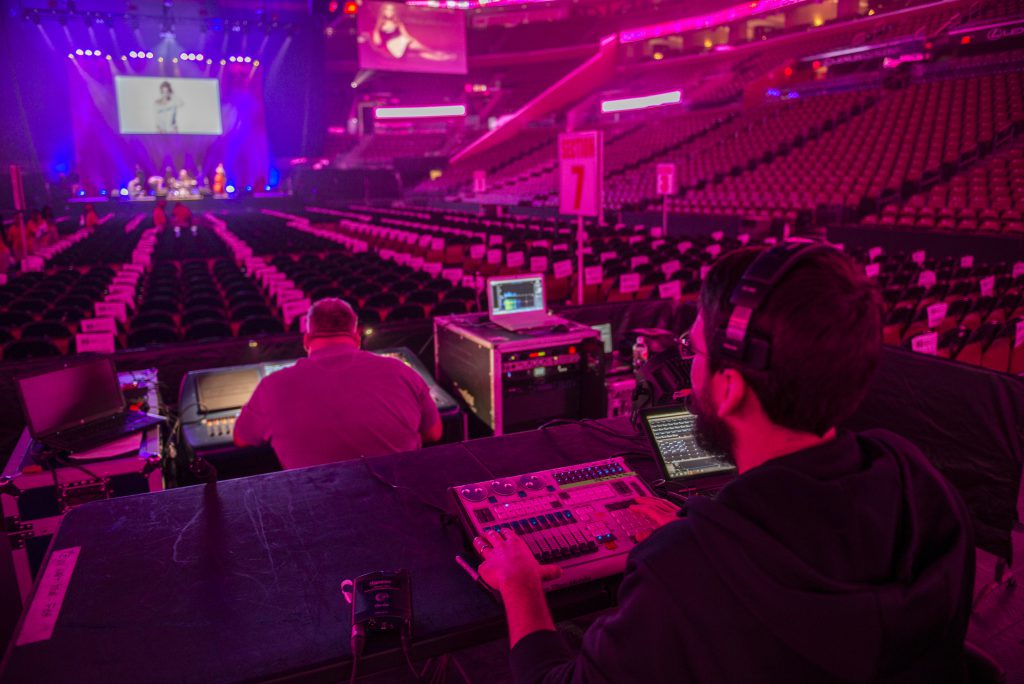
Do you know which fixtures are in the house rig when you start specifying your own fixtures? Does the house rig influence which fixtures you will specify?
“I have done it both ways. In the case of Amy Schumer and Fetty Wap, I put together the designs to include appropriate fixtures for the shows since they were both in arenas with no house rig in place. When specifying my own fixtures I consider the type of performer I am lighting and work from there with the vendor to build a rig that will suit the show.
“On the other side of things, for years I have worked in venues as the house LD with just the house system, which is great because I have built up a lot of programming in those situations that allows me to match any performance.”
Do you do any preprogramming for one offs?
“I have show files for my two main consoles, Avolites and grandMA2, that I am continually building on and adding to so I always have a starting point for a show. When time allows I will do some previz in advance, especially if I am trying out new fixtures or design concepts for the show.”
What is the biggest challenge of doing a big-time one off?
“Often I do these types of shows without rehearsal and sometimes without even a sound check, so the first run is in front of a live audience. I am challenged to prepare a show with enough flexibility to handle whatever direction the artist goes in his or her performance. This is very important in regards to the musical one offs that I have done. The artist will perform anywhere from 45 minutes to three hours of music. It’s up to me to light that without allowing things to look stale. For comedy shows there is less stress on prepping a punt page, but just getting the vibe of the performance and putting it into the stage look to help the performer tell the story.”
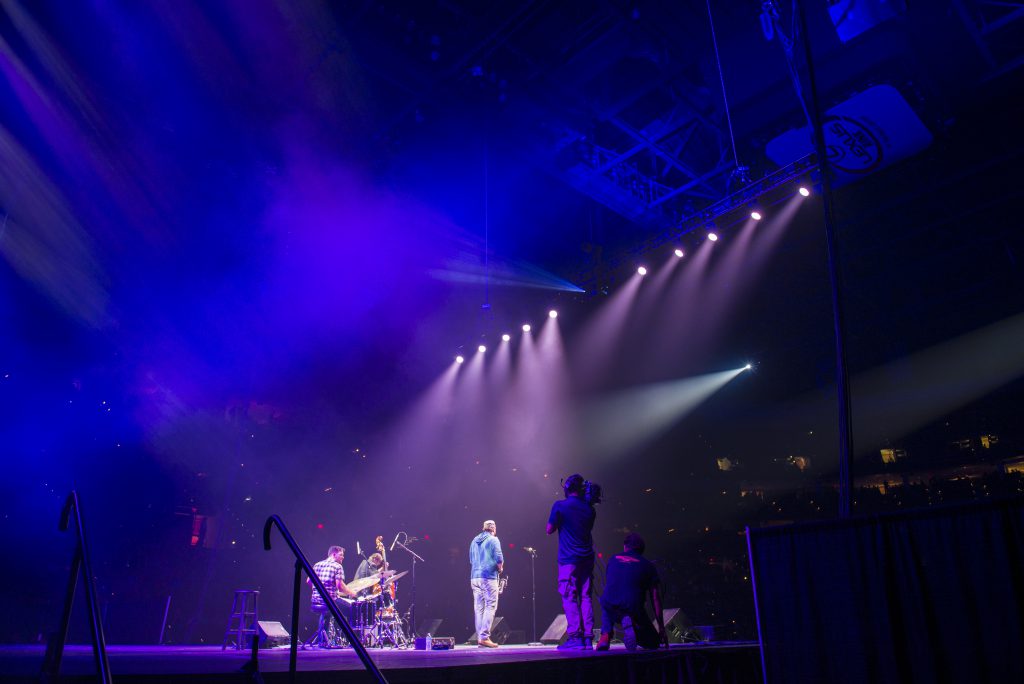
How does doing one offs compare to touring? What are the pros and cons of each?
“One offs often put me in a position of having to punt my way through a performance. This is an exciting challenge and I often have done this without a set list or any direction from the artist. While this can create some challenges when I have to find cues in a show, the payoff comes when I lock in with the show and the cues come easily.
“Putting gear together for a one-off is another exciting challenge. You want to bring the right type of rig to match the artist’s performance and I often like to use it as a chance to try new design concepts. At the same time you know that your rig has to fit with the budget for time and money.
“On the other side of the coin, when I am touring, I can get in a groove with a particular act and build specific looks and cues for their show. Touring also gives me a chance to push the design for a show farther, since it often involves some pre-tech time and prep which allows for a more specific setup for the artist.”
Is load in different when you’re doing a one off?
“Yes. Any time it’s a one off rig and not a touring system there are challenges, since it may be the first and only time that gear will go together that way. I love trying new design ideas or fixture layouts for one-offs but it means the load in requires more attention since it’s new for the crew.”
Earlier you talked about punting at your one offs – what is the hardest part about punting?
“Finding the right balance when it comes to taking chances with bigger looks, blinder hits, strobes etc. when you don’t know the music. You want the show to feel big, but at the same time you also don’t want to miss cues or overdo anything and have it feel out of place.”
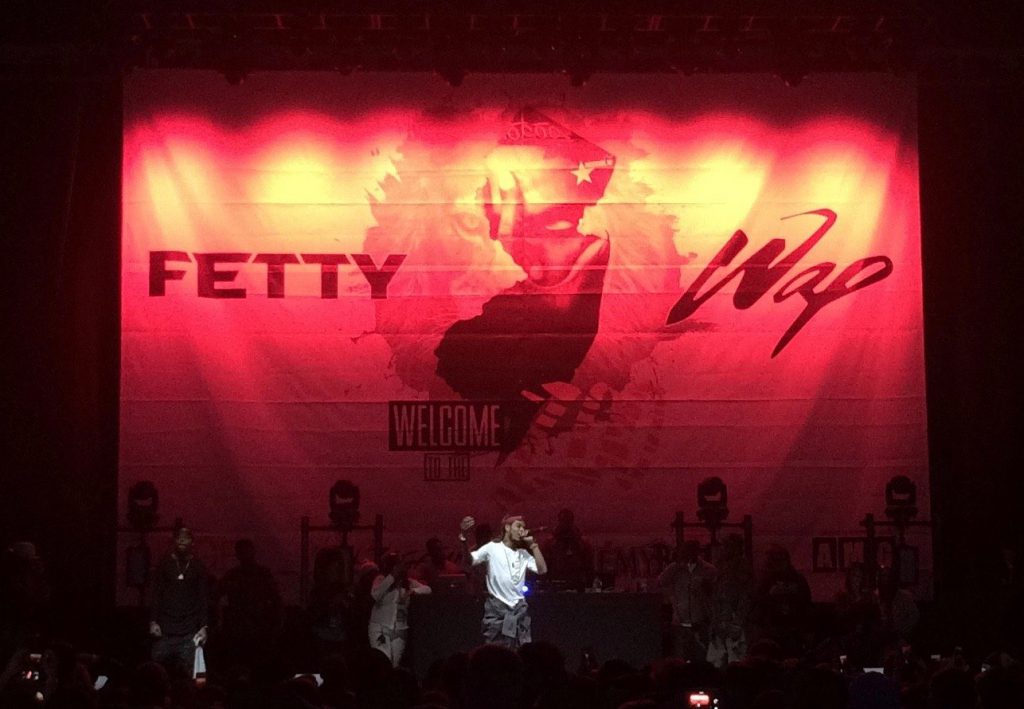
Does this punting make you more creative on other projects down the road when you have more time to plan?
“Yes. I am able to try out new things or find happy accidents during a punted show that I can bring back on future gigs. Sometimes I will save looks mid show or snap a quick picture to help me remember what I did so I can use it again.”
Do one offs ever lead to longer term relationships?
“My longest running touring gig started as a one-off at The 8×10 in Baltimore, MD with The Infamous Stringdusters. I ended up working with them for four years. I was the house LD that night and did the show on the fly. At the end of the night their FOH engineer asked for my contact info and things rolled from there. There have been other occasions, where doing a one off has led to me being brought in for a large festival play or a run of shows here and there with different artists.”
What advice do you have for someone who is doing his or her first one off?
“My favorite question for an artist’s crew when I am lighting a one off is, ‘What don’t they like?’ This will get you answers like: don’t black out, don’t use green/yellow, no strobe etc. I always find it easier for artist’s crew to answer that question than asking them what they want me to do since it is usually their FOH engineer giving me notes. Aside from that, light the talent and have fun.”